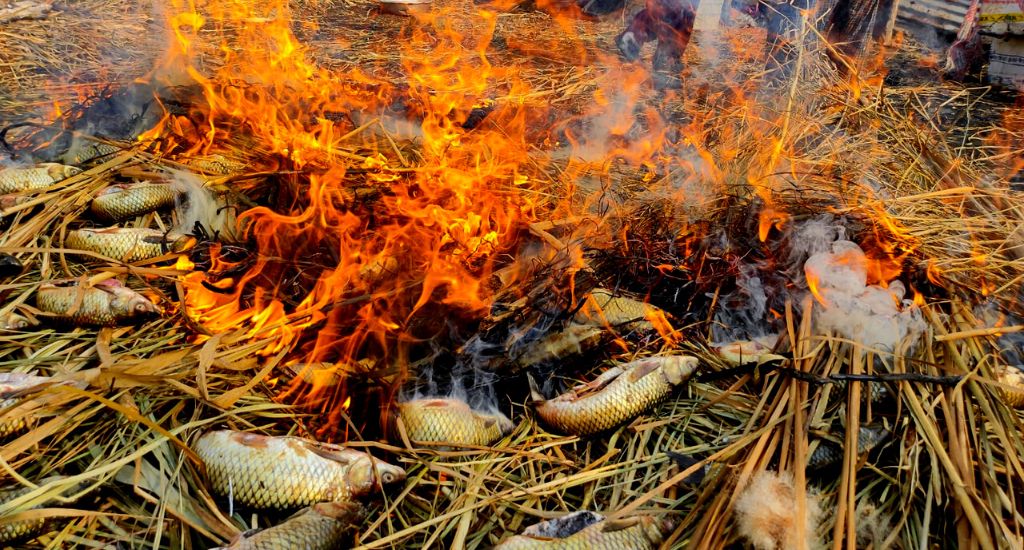
The ‘faere’ tale of Kashmir’s smoked fish dish
Faere is Kashmir’s smoked fish – most loved in the cold months – that’s gone from a survival dish, when fresh food was hard to get, to a Kashmiri comfort food to a gourmet dish for foodies.

Faere is Kashmir’s smoked fish – most loved in the cold months – that’s gone from a survival dish, when fresh food was hard to get, to a Kashmiri comfort food to a gourmet dish for foodies.
Kashmir is replete with snowy vistas, flowery meadows, gurgling rivers and the placid Dal and its sibling lakes – all which inspire its people’s warm hospitality and their famed wazwan feast of 30 courses or more.
But seasons shape the distinctly delectable everyday Kashmiri diet and winter brings on a whole new fair.
Or – to be precise – the smoked fish called faere.
Also written as fae’re or faer’ie and pronounced pharie, it’s charred and roasted freshwater fish that’s relished as a delicacy.
But it’s also relied on as a tasty supplement that locals turn to when protein-rich foods become rare in the wintry weather.
Making faere appears to be a simple process that hasn’t changed much since those early days. But it requires expertise and patience at every single step of the way.
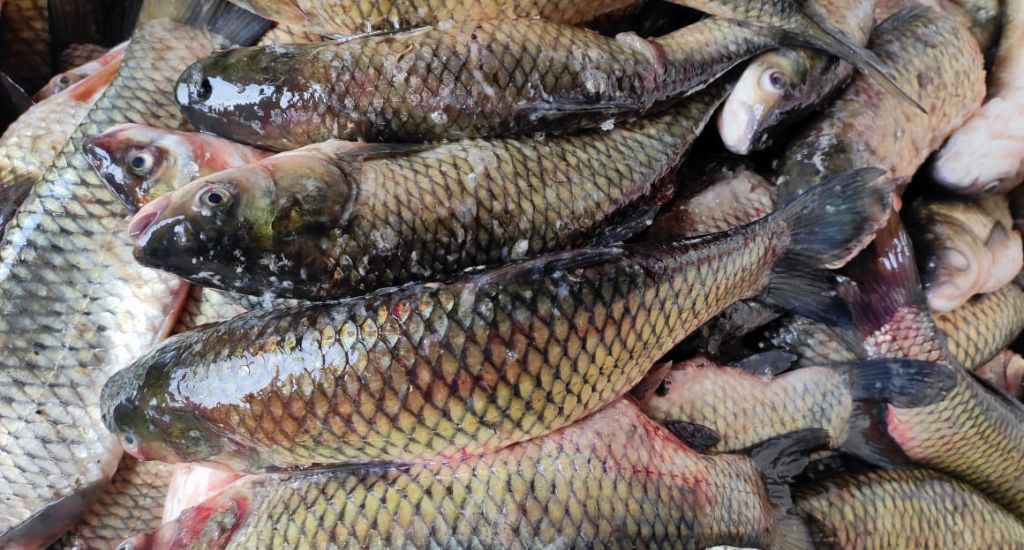
It begins in the autumn when a grass, called naar gaase, that grows in the wetlands is cut and brought home in bundles. These are laid out to dry in the backyard. These will be burnt later. This grass lends the fish its special flavour, like hickory in a meat smoker.
Then comes the catch.
Mohammad Sultan, a 55-year-old man, plods out heavily in the morning cold to Anchaar, a lake close to the legendary Dal, where he meets fellow fishermen clad in woollen pheran overalls and catching fish. He returns by noon with a basket of fresh fish.
Also Read | Be in the pink this winter with Kashmiri noon chai
His laidback life then changes gear.
His wife, Saleema, sorts the bigger fish, then splits, guts and cleans them in a tub, carefully draining the water out after each wash. In the meantime, Sultan arranges the dried naar gaase hay in a circle, piling them in layers.
“I’ve been smoking fish since my youth. Learned the art from my forefathers,” Sultan said.
The couple places the cleaned fish on the grass bed and sets it on fire.
The fish of choice is the snow trout, locally known as kasher gaa’d.
While Kashmir’s rivers and lakes have native species, trout has flourished in the highland’s oxygen-rich waters since 1900, when India was still a British colony and the first Scottish trout eggs were sent to the maharaja.
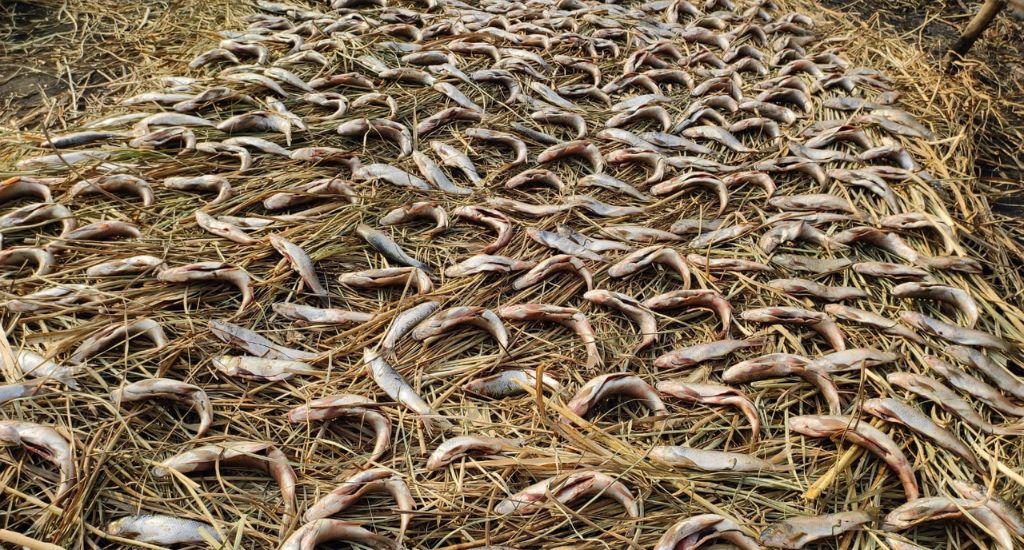
The fish adopted its new home seamlessly as the conditions were ideal.
Trout survives only in cold, clean running water, and eats aquatic insects, small fish and crustaceans. By the 1980s, commercial trout farming began in man-made ponds fed by glacial runoff.
As flames lick the trout’s silvery skin it burns to a jet black with the smoke infusing the fish meat.
Sultan and Saleema keep an eye on the pit, often sprinkling water to control leaping, runaway flames and stimulate more smoke. This goes on for hours, until one of Kashmir’s legacies is ready with an intense smoky char and a tender interior.
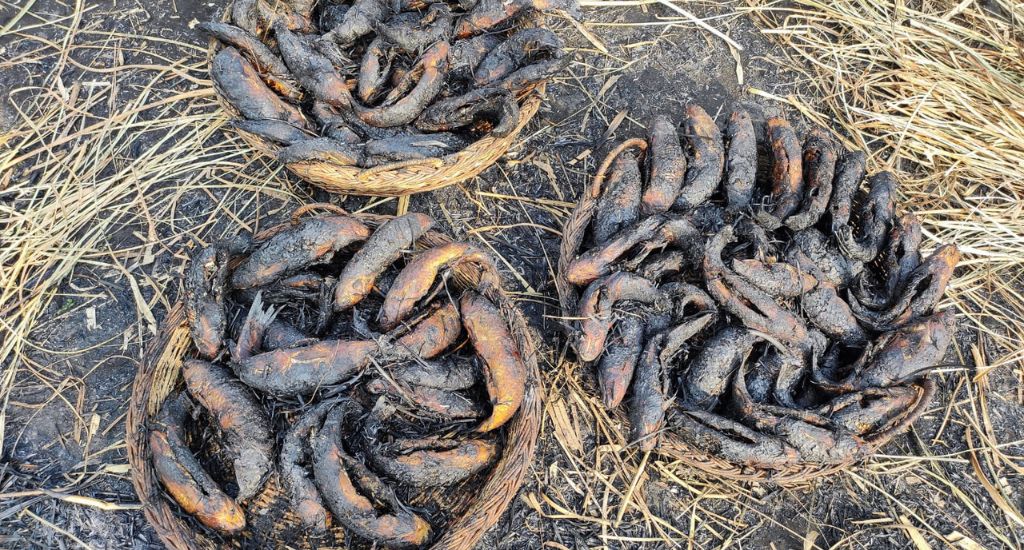
“My wife and daughter help me smoke the fish and also collect naar gaase,” Sultan told Village Square.
Wait, let’s not overlook the market for this winter dish. Smoking the fish he catches or buys from other fisherman catching trouth in Dal lake, Sultan helps earn extra income.
Their faere is packed in hand-woven wicker baskets and taken to the bazaars.
“This is my favourite fish. My children love it too. We wait for the winter for this,” said Mymoona Akhtar, buying fae’re at Nawuet market in Srinagar.
Sultan nods in agreement.
“Demand diminishes during summer, but increases exponentially in winter,” he said.
When a family relishes its meals sitting cross-legged on a dastarkhaan – a cloth spread on the floor – on wintry days, it hardly betrays the fact that for all its storied history faere was part of Kashmir’s survival ration. It’s from a time when fish and vegetables were smoked or dried to extend their shelf life.
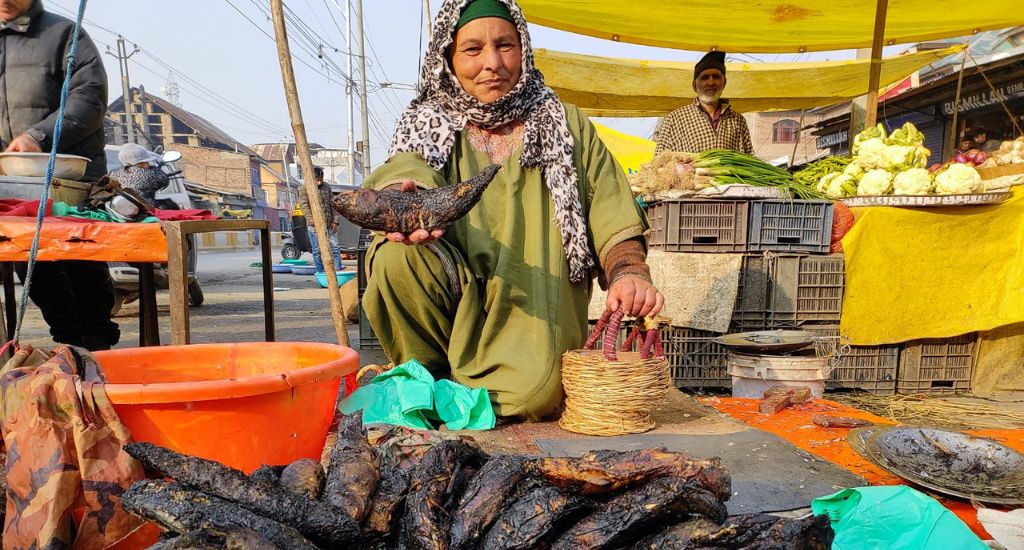
Kashmiri cooks have elevated this frugal food to gourmet level.
Fresh foods are easily available today, but people still crave faere cooked with haakh (collard greens), tomato, radish, lotus stem or dried brinjal.
“A friend is visiting tomorrow. We will prepare faere haakh, the winter treat for him. He’s come home after two years from West Asia,” said Tasleema, buying smoked fish at Saraibala market in Srinagar. “I will remove the charred skin, clean the fish thoroughly and cook them in a blend of spices and haakh.”
The comforting old favourite is so tasty, most who eat it fall and ask for more than their “faere” share.
The lead image at the top shows fishes being partially roasted in smoke and the flame rising the gastronomical sense of every food lover (Photo by Nasir Yousufi)
Nasir Yousufi is a journalist based in Srinagar.